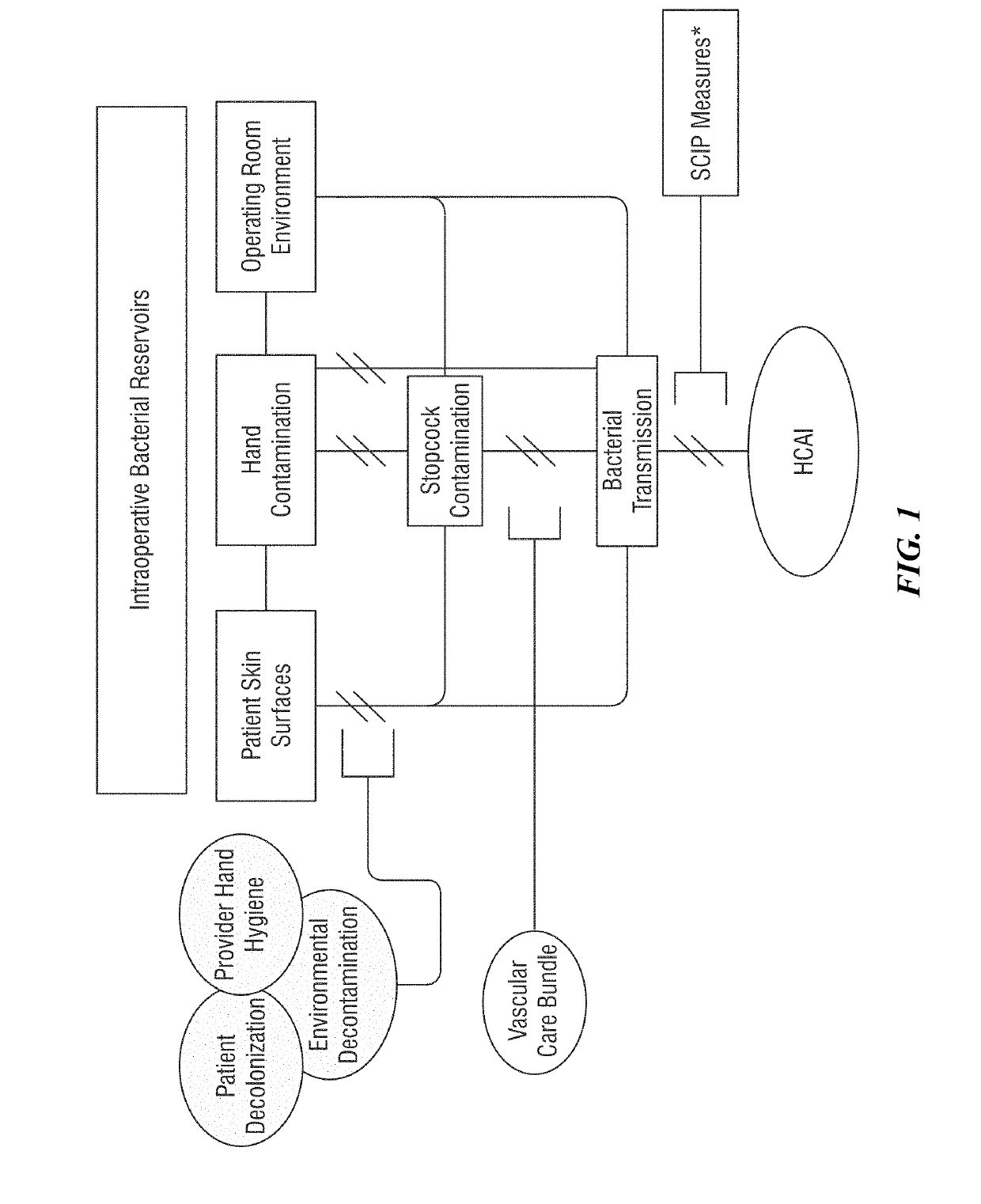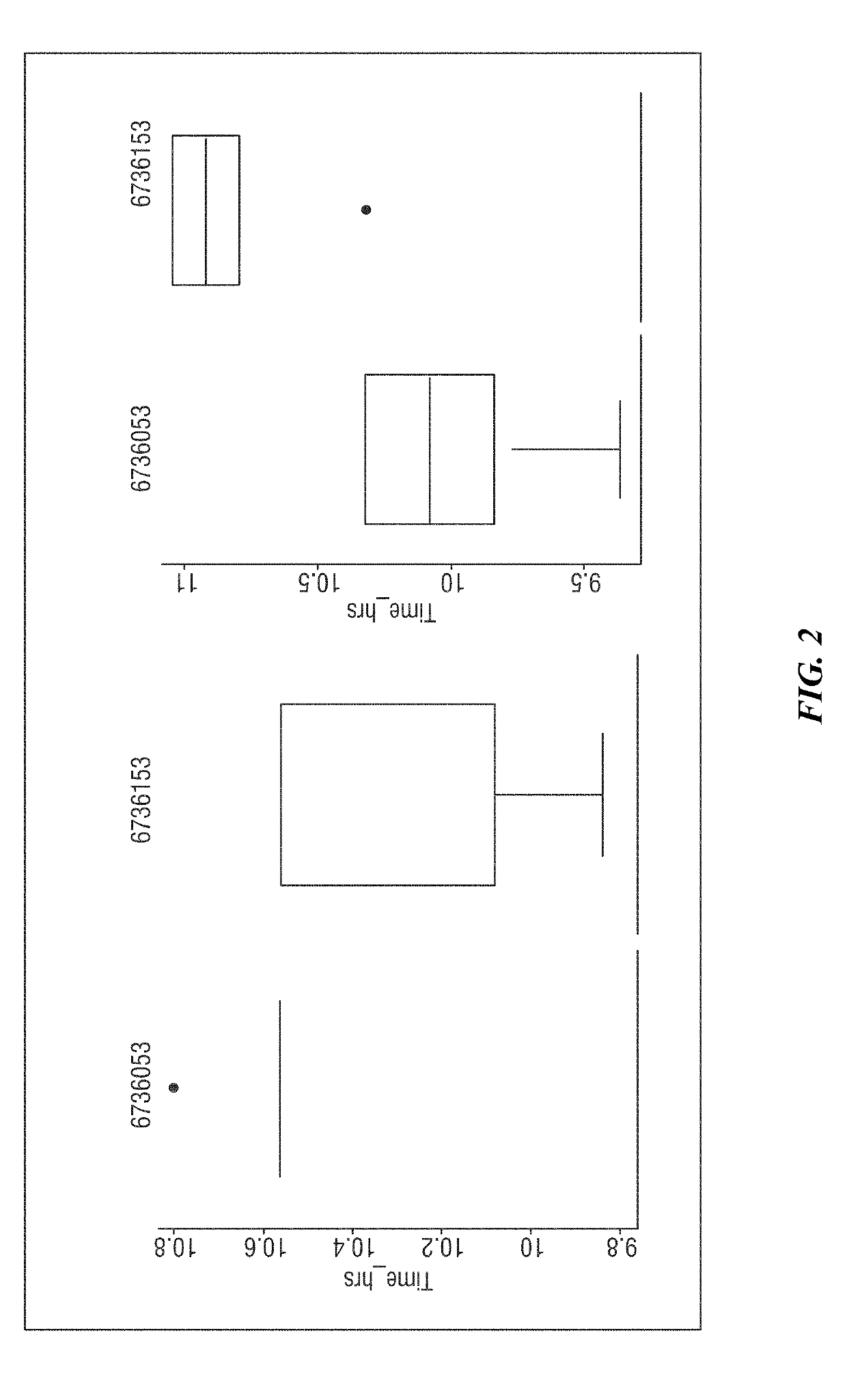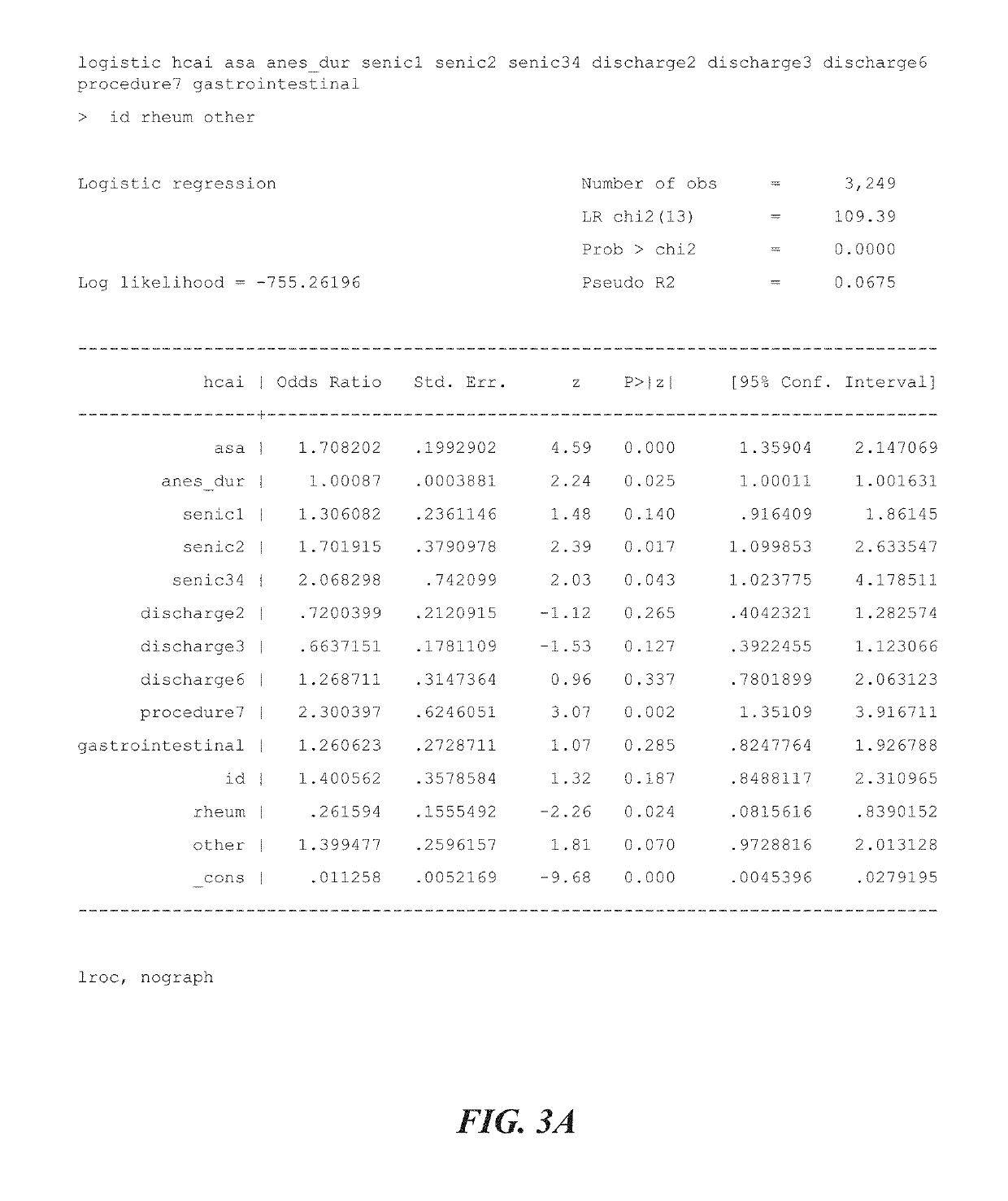Multi-level, laboratory-based surveillance system for detection of intraoperative "eskape" bacterial pathogens for hcai prevention
a laboratory-based, hcai-prevention technology, applied in the direction of instruments, biochemistry apparatus and processes, ict adaptation, etc., can solve the problems of hcais, antibiotics are no longer as effective in treating infections when they develop, and great patient harm will continu
- Summary
- Abstract
- Description
- Claims
- Application Information
AI Technical Summary
Benefits of technology
Problems solved by technology
Method used
Image
Examples
example 1
[0245]Previous work by the Inventors isolated over 6,000 major bacterial pathogens from bacterial reservoirs. The isolates were obtained from serial surveillance of 2,170 environmental sites, 2,640 health care provider hands, and 1,087 patient samples during the process of patient care for 274 case-pairs, or 548 patients. From these reservoirs, more 6,000 potential and 2,184 true bacterial pathogens were isolated, including over 150 S. aureus isolates. Each of these isolates was archived, linked to a specific surgical case, to a specific day, to a specific operating room site, to a specific patient, and to a number of patient, provider and environmental demographic factors. Based on this archival, it was possible to begin the process of characterizing the epidemiology of bacterial resistance.
[0246]The first bacterial pathogen characterized was S. aureus, the leading cause of surgical site infections (SSIs). From the more than 150 S. aureus isolates acquired, clinical microbiology me...
example 2
[0249]The entire process can provide detailed feedback to a quality assurance team on the performance of their preventive measures focused on attenuation of bacterial transmission and subsequent healthcare-associated infection development. The detail includes the source of bacterial infections (reservoir of origin), modes of transmission, key portals of entry to the patient, key portals of exit related to the patient, and key pathogen strain characteristics. This information is generated from a subset of patients identified as high risk by proprietary predictive modeling and applied to the population to effect global improvements. Outputs require integration of several data streams, including patient performance results and bacterial success, defined as clinically relevant pathogens.
[0250]The process includes pre-procedure patient data analysis, post-procedure patient data, reservoir collection and systematic-phenotypic processing of bacteria to identify epidemiologically-related ba...
PUM
| Property | Measurement | Unit |
|---|---|---|
| Fraction | aaaaa | aaaaa |
| Volume | aaaaa | aaaaa |
| Volume | aaaaa | aaaaa |
Abstract
Description
Claims
Application Information
 Login to View More
Login to View More - R&D
- Intellectual Property
- Life Sciences
- Materials
- Tech Scout
- Unparalleled Data Quality
- Higher Quality Content
- 60% Fewer Hallucinations
Browse by: Latest US Patents, China's latest patents, Technical Efficacy Thesaurus, Application Domain, Technology Topic, Popular Technical Reports.
© 2025 PatSnap. All rights reserved.Legal|Privacy policy|Modern Slavery Act Transparency Statement|Sitemap|About US| Contact US: help@patsnap.com



